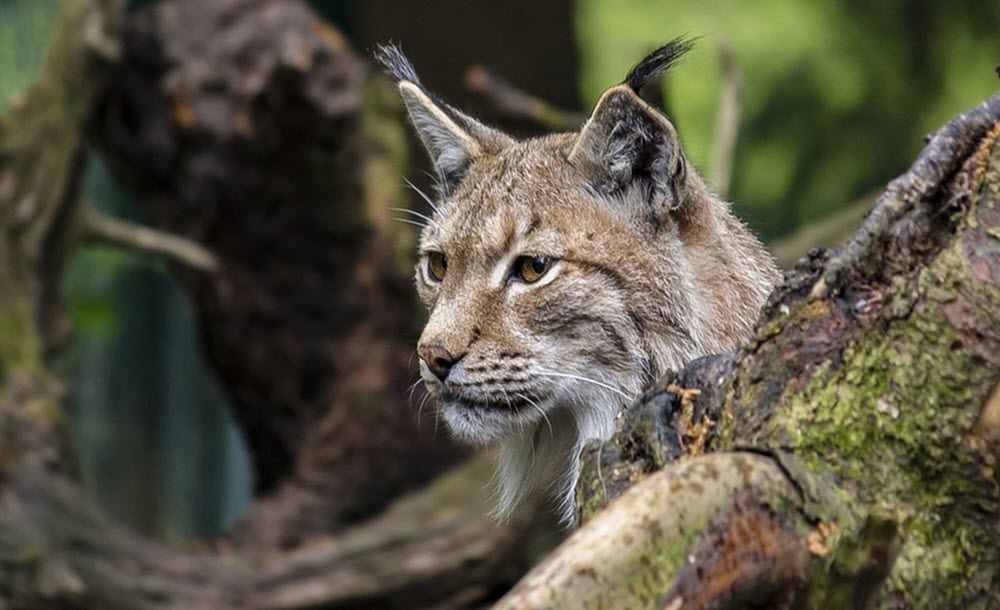European Bobcat
Contents
The Lynx Lynx, commonly known as the European Bobcat or Eurasian Lynx, is a majestic and elusive feline species that inhabits the dense forests of Europe and Asia. As an apex predator, it plays a pivotal role in maintaining the ecological balance within its habitat. This article seeks to elucidate this captivating creature’s biology, behaviour, conservation, and cultural significance.

An Introduction to Lynx Lynx
Taxonomy and Physical Characteristics
Lynx Lynx belongs to the Felidae family. This wildcat is distinctively recognisable, sporting a short tail, tufted ears, and a muscular build. Its fur varies in color, ranging from golden to grey, often adorned with spots. It has a ruff of fur framing its face, resembling a mane.
Geographic Distribution and Habitat
The Eurasian Lynx has an extensive geographic range, stretching from Western Europe to the Russian Far East. It primarily inhabits dense forests with abundant undergrowth but can also be found in tundra and rocky areas.
Behavior and Ecology
Hunting and Diet
The European Bobcat is a carnivorous predator, with a diet primarily composed of ungulates such as roe deer and chamois. It employs stealth and strength, often ambushing prey from the dense foliage. It has also been known to prey on smaller mammals and birds.
Social Behavior and Reproduction
Lynx Lynx is largely solitary, with males and females interacting primarily during the mating season. After a gestation period of around two months, females give birth to litters of one to four kittens. The mother nurtures the young and learn hunting skills before venturing out independently.
Conservation Status and Threats
A Fragile Existence
The European Bobcat is classified as “Least Concern” by the International Union for Conservation of Nature (IUCN), but its status varies regionally. In some areas, populations are stable, while in others they face the threats of habitat loss, poaching, and prey depletion.
Conservation Efforts
Conservation efforts for Lynx Lynx are multifaceted. They include legal protection, habitat restoration, and anti-poaching measures. Reintroduction programs have also been initiated in certain regions where the species had previously been extirpated.
The Cultural Significance of the Eurasian Lynx
Historical Representation
The Eurasian Lynx has been a prominent figure in various cultures. In ancient European societies, it was often associated with mysticism and was considered a symbol of secrecy due to its elusive nature.
Contemporary Relevance
In modern times, the Eurasian Lynx often serves as a symbol of wilderness and conservation. It features in literature, documentaries and is often used as a flagship species for conservation campaigns.
Coexistence: Humans and Lynx Lynx
Balancing Conservation and Human Interests
Promoting the conservation of Lynx Lynx must be balanced with consideration for local communities. Encouraging sustainable forestry practices, developing ecotourism, and educating communities about the ecological role of the Eurasian Lynx are vital.
The Future of Lynx Lynx
The sustainability of Lynx Lynx populations depends on concerted conservation efforts, policy development, and fostering coexistence with human populations. Preserving this species is intrinsic to maintaining biodiversity and ecological balance in Europe and Asia.